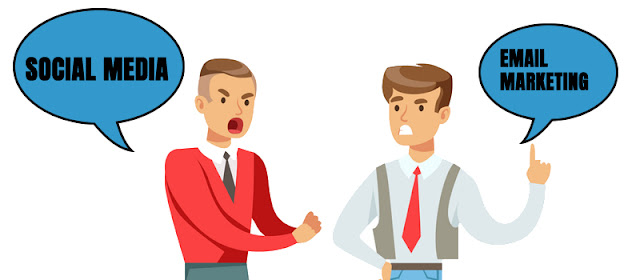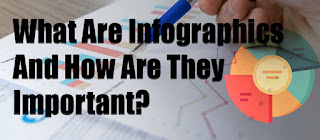Social Media Vs Email Marketing: Who’s The Winner?
There are more than 4.7 billion Internet users in the world and nearly 80% have their social media accounts. Actually, an average of 5.7 billion social media accounts. That’s huge!
But, here’s the thing:
Most probably all of them have an active email account.
So, what’s an intelligent marketer like you to do? In this column, we’ll share the statistics and predictions for email marketing vs social media performance from 2020-2021 and beyond.
Let’s dive right in with the question……
Is Email Marketing Still Powerful?
Over the past few decades, social media visitors have grown at an exponential rate. Not stunning, right? One decade may as well be a million when it comes to technology.
More interestingly, the number of social media users raised by 520 million between August 2019 and March 2020.
It’s clear that social media is not a hobby but is a channel, like an email, that can be used to reach your target viewers. In fact, 85% of marketers say that social media is essential for their business.
In times of these trends, some marketers are querying, will social media replace email?
The fact? Email’s not going anywhere for a good, long while.
When you look at the effectiveness of email compared to social media and take a glance at the ROI of each, it’s much clear that email is the champion. By a lot.
But here’s the thing: if you actually want to make the most of your email marketing and retain your target audience in a new way, add social media to your marketing plan.
In this column, we’ve gathered the latest email marketing and social media statistics and predictions.
Summary: Email Marketing vs Social Media Performance.
Email Marketing vs. Social Media Statistics
Email Social Media
Total Users 4.8billion 5.4billion
Preferred Channel 70% 25%
For promos
Conversion Rate. 7.05% 3.2%
Open/ Click-Through/ Engagement 24.90% or 0.64% ER
Rate 4.89% CTR -
ROI 5500% -
Yes, that is a dash(-) rather than a number for the social media ROI. And, yes, we WILL reveal about why when we get there. For now, let’s talk for just about why we chose these stats to cover.
We’re talking in terms of total users instead of accounts so you can get an idea of the number of users. Accounts don’t make purchases, right? Users do. But, if you’re curious, there are something like 10 billion email accounts (enough for every user in the world to have 2.22).
Also, every social media user has an average of 5 accounts. The most famous ones are precisely the ones you’d think: Facebook (by A LOT), Instagram, Twitter, Snapchat, WhatsApp, etc
Okay, let’s dive in!
Total Users
The total number of users for both email and social media is going to continue to rise. But numbers alone are of little consequence to you, right? You want to know who these users are: ethics, demographics, what motivates them.
Not only does email have the greatest user base overall, but it also has the greatest user base of any age group.
From age group 15-24 the email and social media usage is 93% and 90% from 25-44 it is 95.5% and 80%, from the age group 45-64 the usage is 95% and 68% and from 65+ it is 86% and 38%.
Of course, age simply begins to scarify the surface of the many ways that your particular customers may use email or social media differently. There are so many ways you can use segmentation to learn about the particular demographics and psychographics that make your customers special.
Email vs Social Media User Preferences
What does your daily morning routine look like?
No, not once when you begin working. We’re talking those times in the darkness after you’ve shut off your alarm or snooze but before you’re actually fully awake.
Your mobile phone is in your hand, you’re still warm in your bed, it’s a time when you want to go back to sleep. But you don’t.
Instead, you open your email. Well, 62% of you do, anyway,
Here’s what the rest will do:
- 8% check the news
- 5% check out their company intranet
- 8% fire up a search engine
- 17% check social media (most likely Instagram)
Additionally, these email-first people are said to be more task-oriented online than the people who begin their day on Facebook, Instagram, or Twitter. Or in other words, they are more likely to address online interactions with specific goals in mind, like finding deals, promotions, or new product information.
But with the rise of mobile technologies, consumers have access to both email and social media. This means the users directly to their email first, social media isn’t long after for those who use it.
So, possibly a better measure of each platform’s marketing usefulness would be how consumers use social media platforms to communicate.
It turns out that 65% of customers subscribe to a brand’s email list to get promotional messages compared to 30% of users who will follow brands on social media to get deals. That’s great news for email marketers!
Which Drives More Sales: Email or Social Media?
We know that 60% of users sign up for brand emails with the expectation of getting promotional emails in their inbox, but the same can’t be said for the 20% of folks who follow brands on social media.
The fact is, people, follow brands on social media but not really want those brands to slide into their DMs.
Deals and discounts are essential for driving sales, so where do users go to look for them? When people want to find a special deal, email is the channel on which they depend or believe.
48% of users check their email for a deal from a firm they know, whereas only 6% will go to Facebook.
So consumers are completely fine with getting your promotional emails, and they actually want to find deals in their inbox. But do those promotional emails really work to make sales?
YES.
65% of users state that they have made a purchase as the result of a marketing message they received by email.
On the flip side, only 15.2% of them even consider a buy button as a purchase driver on social media.
Here’s the most interesting part:
It’s definitely not fear of purchasing online that creates this hesitation since 95.2% of global internet users have purchased products online.
Plus, just under half of the global internet users trust social media for product research. Making the leap from social research to social purchase, however, seems to be a difficult task.
Researchers think that chatbots may be the way to bridge this gap by keeping product research, customer service, and purchasing together in a single place.
Bottom Line: Email marketing is a great way to make sales online.
Which One Has Greater Reach: Email or Social Media?
This may come as a surprise, but social media doesn’t have a great engagement rate. Barely over half.
The Condition Of Mobile Email Engagement: What You Need To Know
Not quite the social everything you were expecting, huh?
On the other hand, email reaches about 88% of the people you send it to (this is called the inbox placement rate) and has an open rate of almost 30%.
To enhance your natural or organic reach on social media, people have to actually engage with your posts, and this can be difficult to fulfil. But with email, you can enhance your inbox placement rate simply by following best practices. And make sure your emails did not go in the spam box.
Email Marketing ROI vs Social Media ROI
When questioned what is the most valuable measurement to measure the effectiveness of any given channel, most marketers admitted that the overall return on investment (ROI) is the most important.
So which submit the greatest ROI: email marketing, or social media?
Yeah, that’d be email.
Email marketing yields $48 back for every $1 you spend – a 4800% ROI.
Wondering what’s the ROI for social media? So are we. So is everyone.
What we can tell you is this:
For the best return on your investment, concentrate on email marketing but develop a social media marketing plan that makes sense for the public you’re trying to reach.
Email marketing and social media marketing aren’t the same and they shouldn’t be interpreted as replacements for each other. The truth is, the best marketers are going to use the two mutually. Here are the ways each of them can be best put to use:
Social media is excellent for driving traffic to your website. You can do that organically by making your content go viral, or by paying for social media ads.
User-generated content is also HUGE on social and can be an outstanding driver of traffic and leads.
Email marketing is wonderful for generating leads, driving sales and increasing customer retention.
Simply put, you can and should use social media to drive callers to your website. But you use an email marketing service like Continuous Contact to build relationships with your subscribers and unlock that ROI.
Got thoughts to share about email vs. social media marketing? Share them with us in the comments!




Comments
Post a Comment